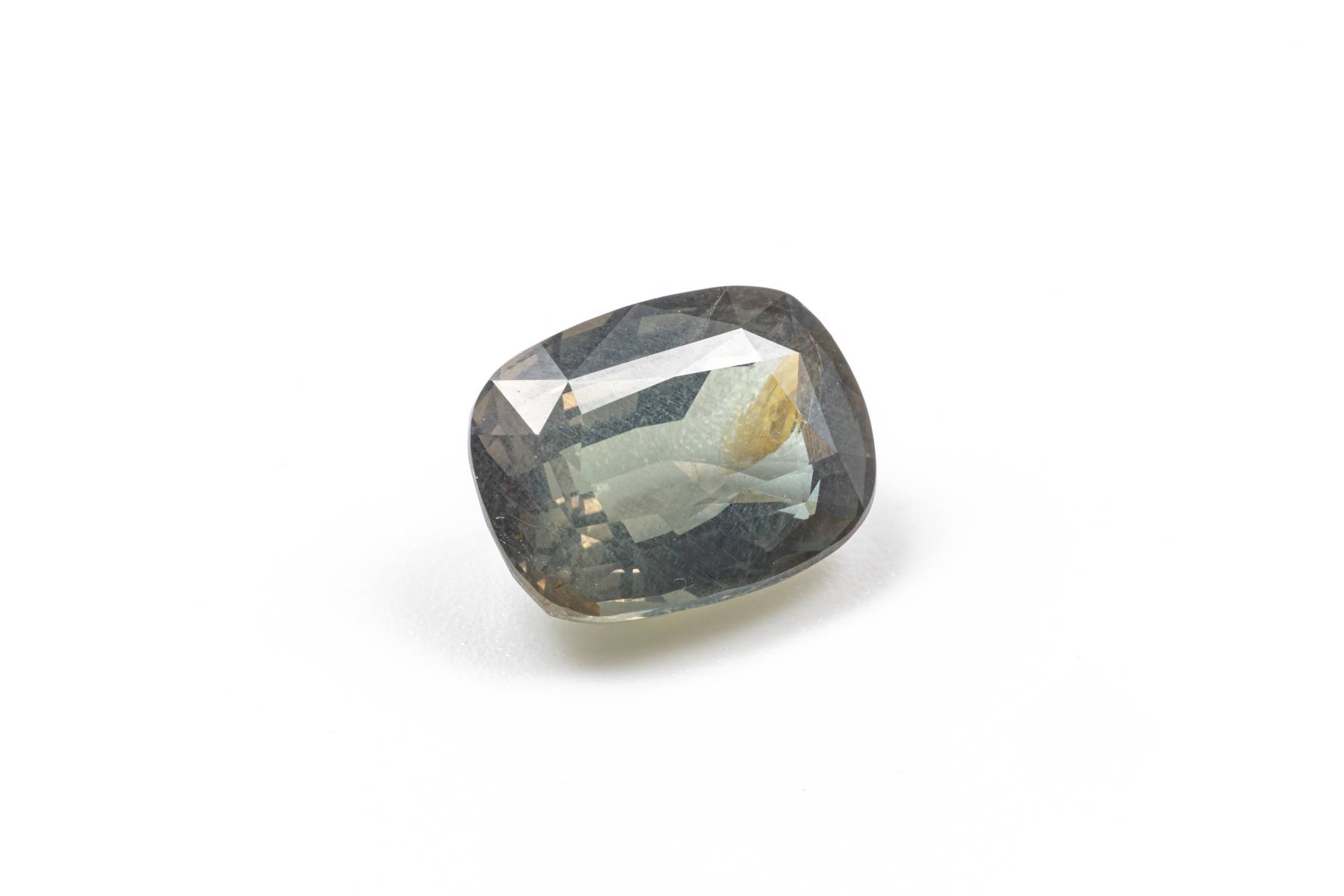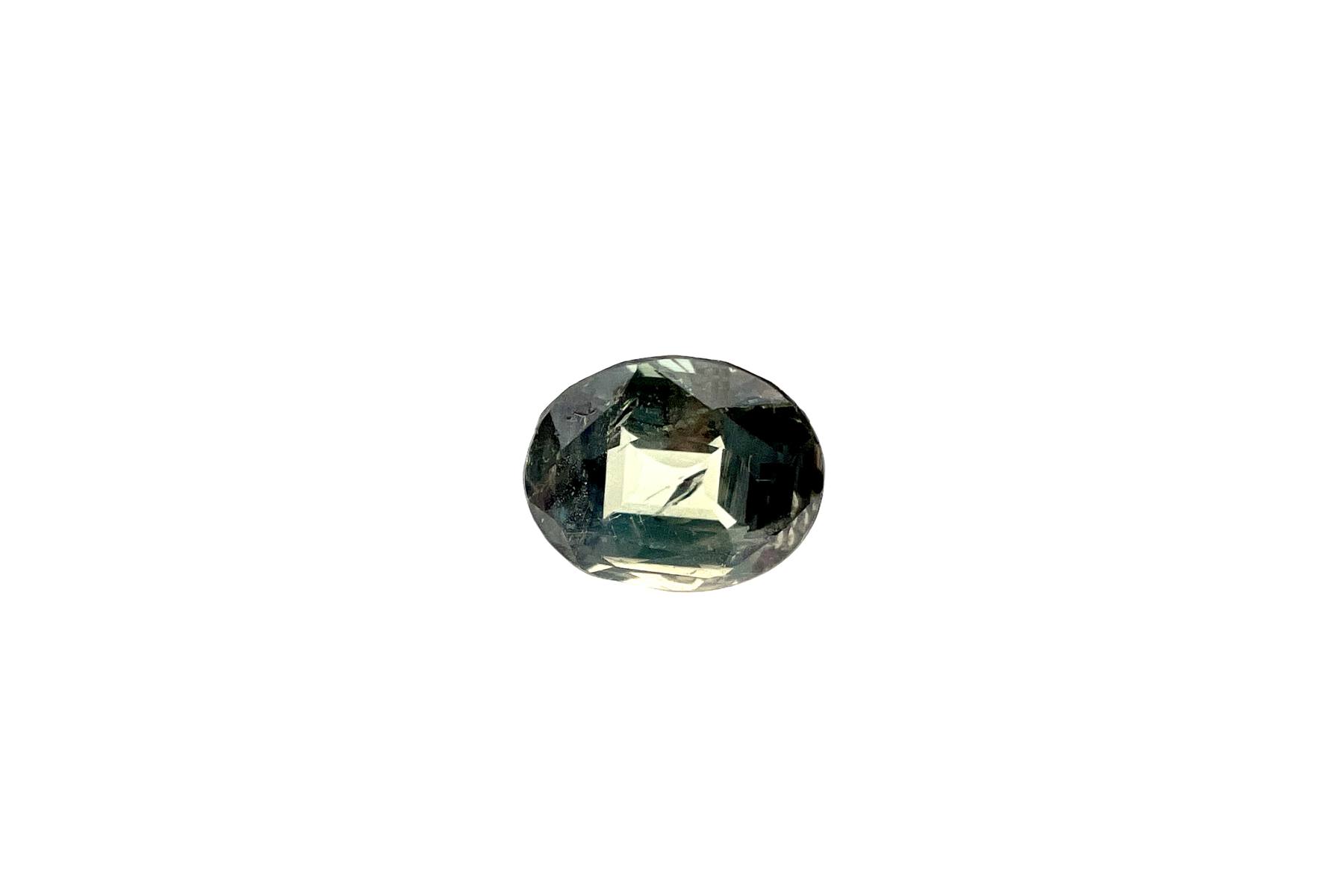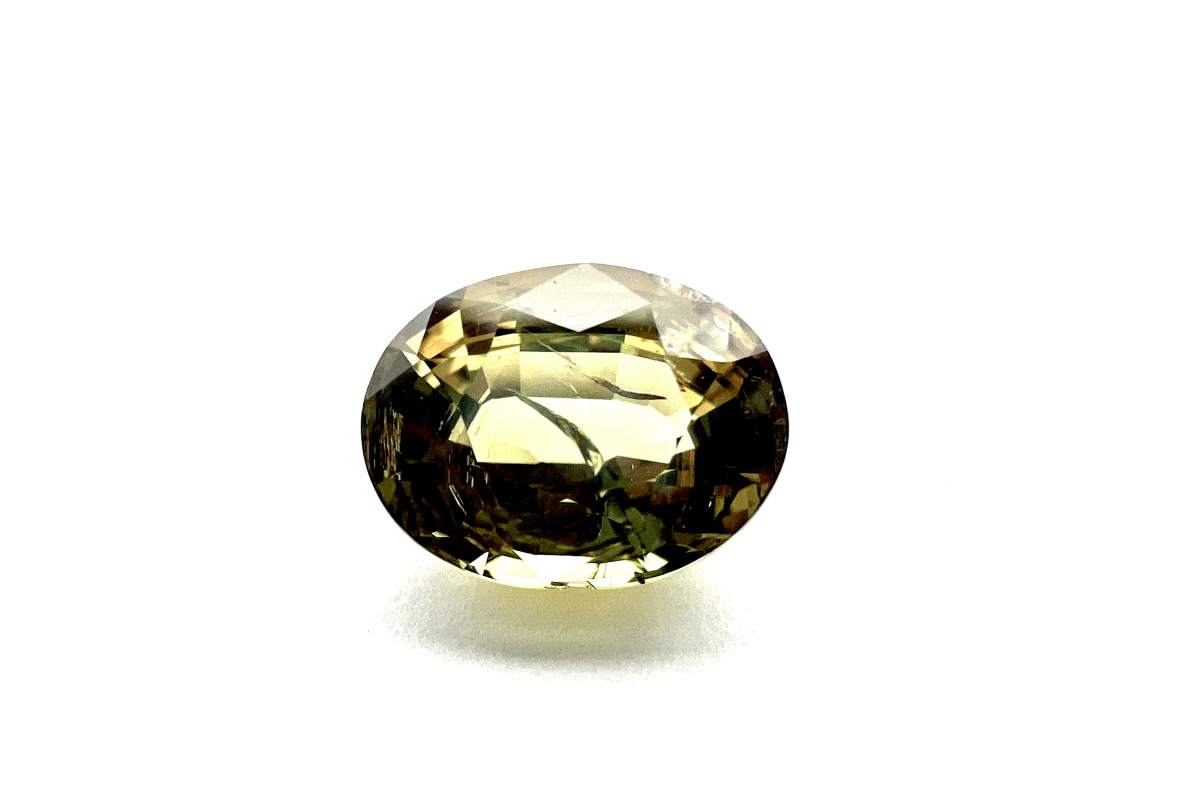Alexandrite
Alexandrite is the trade name for color-changing chrysoberyl. The special thing about this stone is its color change, pure chrysoberyl shows no or only little color change when the stone is brought from daylight into artificial light, Alexandrite on the other hand does.
The alexandrite is mineralogically a chrysoberyl with a high hardness of 8.5 and a great density of 3.75. Chemically it is the link between the aluminum oxide of the corundum and the beryllium silicate of the beryl, so among other things the emerald. The color in this gemstone comes from iron and chromium. It was first discovered in 1830 in Russia near the city of Ekaterinburg and named “Alexandrite” in honor of Tsar Alexander II. It was considered the national stone of Tsarist Russia, as it combines the two national colors red and green. Its peculiarity: at its best it is green in daylight and red in artificial light. It was discovered in an emerald mine and because of its daylight green color it was initially thought to be an emerald until it was discovered that it was a different mineral. Its color change from greenish-bluish in the case to rich red is not caused by its own coloration, but by the composition of the incident light. Daylight contains a lot of blue, artificial light a lot of red. Alexandrite from Russia shows mainly a color change from green to red, those from Sri Lanka mostly too, but Alexandrite from Brazil can also show a color change from blue to red, which makes these stones very attractive.Alexandrite comes as already mentioned from Russia, but today mainly from Sri Lanka, Brazil and Tanzania. Wanted are large stones with high purity and a high color change. These are extremely rare, therefore the stone also achieves very high prices. The color change from green (or blue) to red is measured in percentage, there is a discussion among gemstone laboratories about up to what degree of color change a stone is certified as “chrysoberyl” and above what percentage of color change a stone is certified as “alexandrite”. Usually stones with a color change lower than 40 percent are called “chrysoberyl”, those higher than that are called “alexandrite”, but there is no generally accepted standard here. A simple rule: the higher the color change, the larger and purer the stone, the more expensive it will be.Since synthetic alexandrite is also on the market, an international certificate is a must with this beautiful and rare gemstone. Often stones with low color change are sold as “alexandrite”, although they are only “chrysoberyl” according to international trade practice.
Showing all 11 results
-

Alexandrite
€12,500.004,124 ct. | VI/EGLA EGL -

Alexandrite
€1,500.001,272 ct. | VII/CGLA -

Alexandrite
€800.000,673 ct. | VIII/CGLA PGL -

Alexandrite
€1,500.001,107 ct. | VIII/DGLA LGL -

Alexandrite
€1,800.001,257 ct. | VIII/CGLA LGL -

Alexandrite
€1,800.001,423 ct. | VII/DGLA LGL -

Alexandrite
€2,400.001,733 ct. | VIII/DGLA LGL -

Alexandrite
€1,600.000,883 ct. | VI/DGLA LGL -

Alexandrite
€4,700.002,550 ct. | VIII/CGLA LGL -

Alexandrite
€2,600.001,597 ct. | VIII/DGLA LGL -

Alexandrite
€5,800.002,026 ct. | VII/CGLA LGL